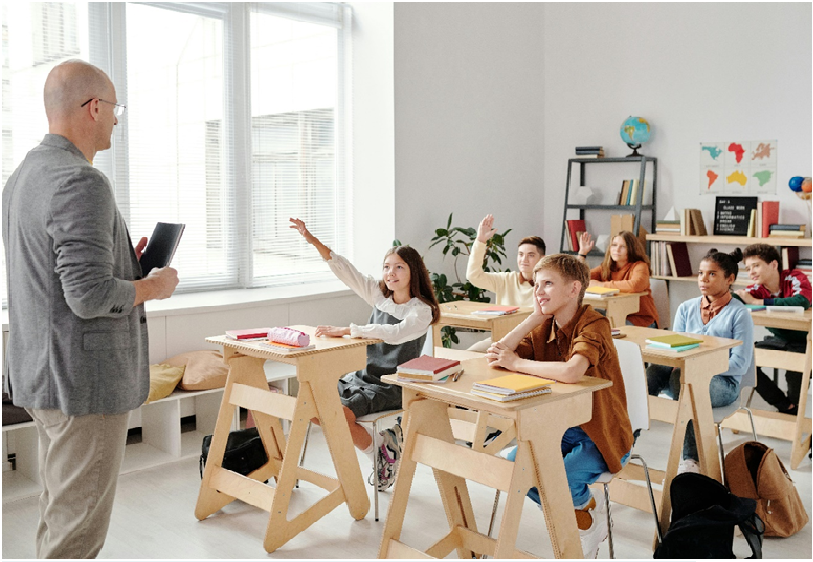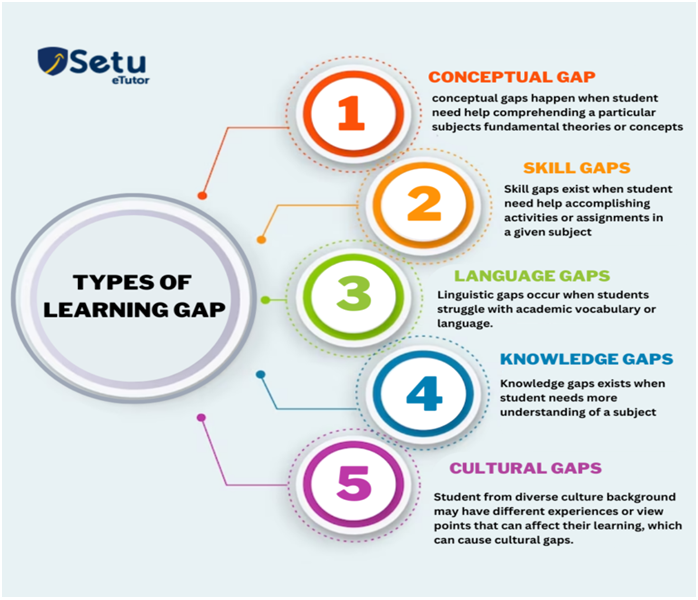
All children ought to have an excellent education. This is probably the objective that any parent, educator, and school official would concur upon in every classroom. Furthermore, each student in a classroom has unique learning styles, aptitudes, and shortcomings. A learning gap occurs when a student cannot keep up with the rest of the class due to differences in their learning styles. To ensure every student is improving, the teacher must find and close learning gaps. Thus, what are some successful strategies by which teachers identify learning gaps and provide relevant instruction? Read on to find out.
What Is A Learning Gap?
A learning gap, to put it simply, is the difference between what a student is expected to know at a certain grade level and what they have learned. A student may have a learning gap in one or more subjects during their academic career.
Students with learning gaps find it challenging to stay up academically with their peers, which has a detrimental effect on their self-esteem and emotional well-being. It may eventually even affect how they develop and interact with others. It’s critical to recognize the differences between accomplishment and learning gaps.
A learning gap focuses on the knowledge that a student should possess at a particular point in time but does not, whereas an achievement gap refers to disparities in educational chances. While some may interchangeably use these phrases, there are differences in the treatments needed to address them.
What Are The 5 Types Of Learning Gaps?
Although the learning gaps of every student are different, there are five primary categories of learning gaps. All five categories of learning gaps are seen, regardless of the mode of instruction online or in person. Just understanding what to look for can help us support our pupils more effectively. Additionally, having a deeper grasp of each kind of learning gap will enable you to determine just how best to support your pupils.

Source: setu.etutor.co
They include:
- Skills Gap
Sometimes pupils understand the theory but don’t have the necessary practice to apply it. Giving pupils extra practice will help them close this learning gap and improve their abilities.
- Knowledge Gap
This is the situation where pupils lack the knowledge necessary to comprehend a novel subject. This is a typical educational gap that aims to address the knowledge gaps.
- Communication Gap
Students struggle to properly comprehend or share knowledge in this situation. Teaching pupils how to articulate their ideas clearly is a necessary step in closing this gap.
- Environmental Gap
Lack of access to school supplies or a conducive learning environment, such as a quiet room, causes this gap. To close this kind of gap, better learning environments must be established for kids.
- Motivational Gap
This is a situation where the students lack motivation to improve their abilities or build their knowledge. They also lack the desire to learn new concepts.
Why Do Learning Gaps Appear?
There are several reasons why learning gaps can occur:
- After the pandemic, both teachers and students have struggled to adapt to the new change of virtual learning.
- The size of the classrooms as many teachers are quitting their profession and providing individual attention to every student becomes difficult.
- Students miss class frequently due to chronic illness, mental health challenges, learning disabilities, or family circumstances.
How To Identify Learning Gaps?
Here are a few ways teachers incorporate within the classroom, to identify learning gaps:
- Assessments
Students’ areas of difficulty might be shown by tests and quizzes. For instance, it may indicate a weakness in the pupils’ comprehension of the subject if several of them answer the same questions incorrectly.
- Observations
Students’ behavior in class is visible to teachers. Do they take part in it? Do they appear perplexed? This method works well for identifying gaps.
- Student Feedback
Asking pupils questions might be helpful at times. They may share with you what they find challenging or unclear.
- Continuous Monitoring
It’s critical to assess kids’ progress. In this manner, determining learning gaps turns into a continuous procedure rather than a one-time inspection.
- Gap Learning Method
With this approach, the knowledge that pupils should possess is compared to their actual knowledge. It facilitates determining the precise locations of the gaps.
How To Close Learning Gaps?
If you are struggling to bridge learning gaps among your students, here are a few ways to do so:
- Normalize Getting Help
One of the most crucial steps in bridging learning gaps is to create a setting where students feel comfortable voicing their concerns. This is because we are unable to assist pupils whose needs are unknown to us. And nobody likes to think they’re the only ones going through hardships.
Clearly state the actions that students can take to obtain assistance. These may be a set time to come talk to you, instructions on how to receive tutoring or a location where they can turn in a note explaining their issue.
- For Genuine Connections
Building a relationship with your students is a key component of fostering an atmosphere where they feel at ease approaching you. Establishing a classroom community that fosters a sense of belonging among students, teachers, and peers is vital.
To foster relationships, follow up with your pupils regularly. Plan team-building or bonding activities regularly to help students develop the confidence to approach one another for assistance.
- Use Classroom Technology
Students learn more interactively and enthusiastically when technology-based activities are used in the classroom. You can also make sure that all of the learning activities are in one convenient area for students to access from home or school by using programs like Google Classroom or Canvas.
Technology can also improve accessibility to classes for students with impairments and students with diverse learning styles.
- Participate In Professional Development
For an instructor, learning never ends. Additionally, you’ll be more adept at filling in learning gaps if you have more knowledge about them. Taking seminars, attending conferences, and joining teacher networks can help you further your professional development and remain up to date on the latest advancements in closing learning gaps.
You will also be able to connect with other educators who are going through similar difficulties. Closing learning gaps isn’t always an easy or quick remedy, so having assistance may boost morale greatly.
Boost Student Success
The first step is to determine the kind of learning gap and the precise subject areas it affects. Then, to narrow the gap, teachers might implement strategies like customized lesson plans and technology-based activities. As teachers with a Professional Doctorate in Education Administration & Leadership, you can offer differentiated, engaging, and standards-aligned learning for your students to improve their success rate.
